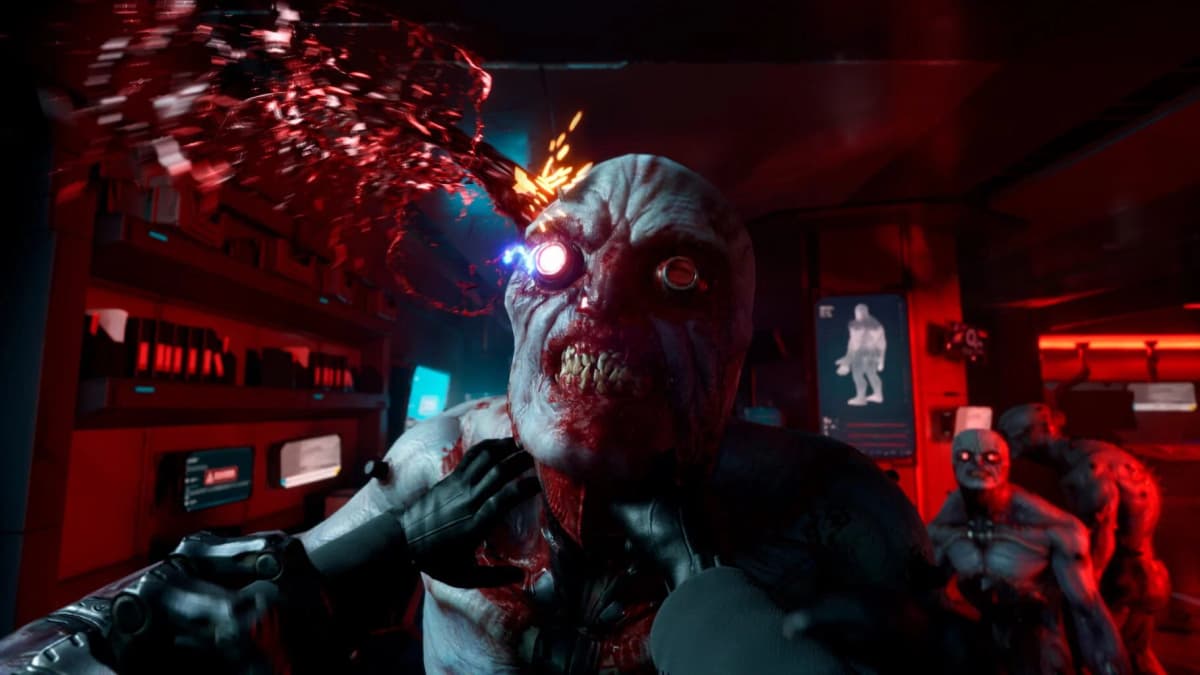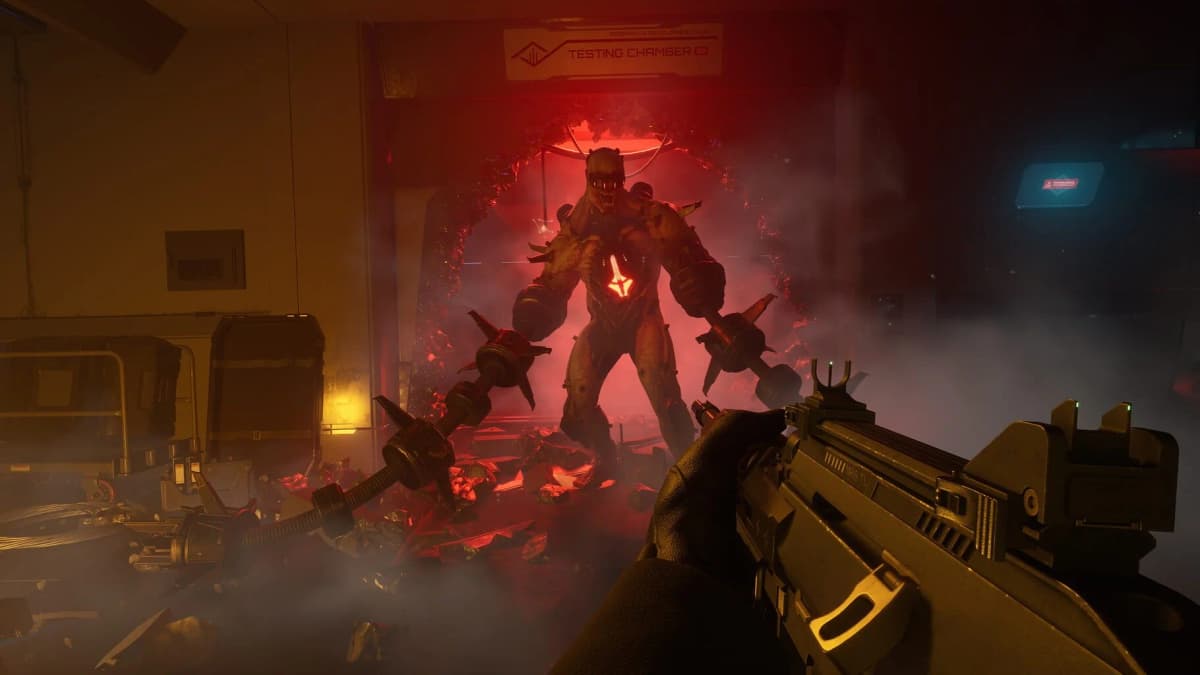
Game intel
Killing Floor 3
It's 2091. Megacorporation Horzine has produced the ultimate army: an obedient horde of bioengineered monstrosities called "Zeds." Now, only the rebel group Ni…
My love affair with mindless, bloody co-op shooters began with Left 4 Dead and flared into an all-consuming flame with Killing Floor 2. So you can imagine how giddy I was to finally dive into Killing Floor 3 after a four-month wait. Fifteen hours later, I’ve been on a rollercoaster of satisfying kills, groan-inducing grinds, and fleeting flashes of true horror—yet I still haven’t found that perfect, unrelenting fury I craved.
In this review, I’ll break down the highs and lows of my time battling hordes of mutant Zeds in this next-gen wave shooter. I’ll look at how the core gameplay holds up, whether the new systems add real depth, and if the overall package lives up to its legacy.
All testing was done on a high-end gaming PC: Nvidia RTX 3070, 32 GB RAM, Intel i5-12400 at 1440p resolution with most settings cranked to High. I mixed solo runs with drop-in squads, tackled every base class, explored the revamped maps, and even tried the new narrative missions. Voice chat was buzzing, voice-overs were on, and I kept an eye on that new Zed Time bar—the beating heart of the latest Zed-slaying frenzy.
Booting up Killing Floor 3 feels like returning to your hometown only to find a slick, LED-lit mall in place of your beloved dive bar. A glossy corporate UI and a “Bastion” main hub greet you, dishing out menu options with slick animations. It’s a far cry from the gritty menus of KF 2, and at first, it feels like too much polish.
The opening tutorial leans heavily on a half-baked narrative about rogue Horzine experiments, complete with voice-acted cutscenes that ambitiously try to build lore. I appreciated the attempt to give our carnage a context, but it also reminded me why I stopped paying attention in KF 2’s story bits. Objectives like “hack this console” and “escort the scientist” quickly became checkboxes rather than immersive tasks. I tuned them out, eager to drop into a classic Survival match instead.
At its heart, Killing Floor 3 remains a shooter first and foremost. The sensation of firing a well-tuned weapon into a charging Scrake or watching a flamethrower singe dozens of crawlers still delivers that visceral “crunch” you crave. Blood spurts, limbs fly, and Zed Time—now governed by a charge bar instead of random chance—lets you freeze the world for those cinematic slow-mo headshots.
The switch to a performance-fueled Zed Time meter is a smart move. Instead of praying for a lucky crit, you earn time based on damage dealt, revives performed, and tactical prowess. Different classes can tweak how quickly the bar fills or how long it lasts. For example, an Assault-style class racks it up fast with precision shots, while a Firebug relies on sustained area damage. This adds a layer of resource management to the chaos: do you burn it early to save an ally, or bank it for the inevitable boss?
Unfortunately, by hour five that novelty starts to fade. The core loop—five waves of increasingly tough foes, a frantic buy phase with weapons and armor, then a boss showdown—feels almost identical to KF 2. You still juggle ammo scarcity, turret placement, and Med-Gel heals, but there’s a sense of déjà vu that can’t be ignored. The new perks and talents are interesting on paper, letting you specialize further into support roles or glass-cannon builds, but they don’t dramatically alter the rhythm.

Killing Floor 3 ships with all your favorite base classes—Gunslinger, Demolition, Support, Medic, and more—and adds two new specials that lean heavily on gadgets and traps. One class deploys remote mines and shock turrets, while another hacks portable drones to scan for hidden Zeds. They’re fun to experiment with, but I found myself defaulting back to my trusty Medic-Gunslinger combo because it simply works.
Progression feels deep but also grindy. Each class has its own XP track, unlocking passive buffs, gun mods, and cosmetic skins. Weekly mutations introduce random modifiers—like explosive Zeds or low-gravity rounds—that keep you on your toes, but after logging dozen-hour sessions the XP requirement to unlock that next perk tier starts to drag.
Visually, the levels fall into two camps: neon–lit research complexes and harsh outdoor environments under strange, tinted skies. Early maps, set inside Horzine facilities, deliver that cozy, claustrophobic tension we love. Flickering lights, steam vents, and cramped corridors still produce memorable moments when you’re cornered by a dogged horde.
But venture outside and you’re often greeted by sun-washed plains or antiseptic compounds that lack personality. Gone is the midnight-horror vibe of KF 2’s Moor and Biotics Lab—replaced by generic sci-fi filler. Without a heavy dose of practical gore effects and unsettling backdrops, these wide-open arenas feel more like training grounds than scenes of gruesome carnage.
That said, boss arenas are generally well-designed, offering verticality and interactive elements—like barricades you can seal or consoles that trigger acid traps. They force you to adapt tactics on the fly, and those final scrambles to revive teammates or pop a healing station can be genuinely heart-pounding.

The art direction swings between sterile sci-fi minimalism and fleeting flashes of signature gore. Character models are top-notch—teeth gnashing, bodies contorting—but the environments often look too clean. I missed the grime-and-grit textures that gave KF 2 its dirty charm.
Audio, too, feels uneven. While weapons pack satisfying punches and Zed roars still bristle with menace, the whole mix is oddly muted. Footsteps echo unnaturally in corridors, and ambient drones sometimes drown out crackling gunfire. The metal-heavy soundtrack still pumps adrenaline into every wave, though I would have welcomed more dynamic tracks that react to the action on-screen.
On my rig, Killing Floor 3 hovered between 90–120 FPS at 1440p, even in the thickest moments. However, certain lighting effects—volumetric fog, neon reflections—spiked GPU temps and dipped frames. Occasional stutters and frame-pacing issues cropped up when three or more explosions overlapped.
Bugs are present but not game-breaking: I clipped through railings, saw teammates float mid-air, and once got stuck inside a deployable shield. Crashes were rare, but the overall polish feels a notch below AAA expectations—especially given Tripwire’s track record. The battle pass and microtransaction system, live on day one, also leave a sour taste when the standalone content feels light by comparison.
Killing Floor 3 introduces a seasonal battle pass with both free and premium tiers. You earn cosmetics, XP boosts, and a few weapon skins, but tangible gameplay rewards are scarce. The store also offers bundles of crafting materials to speed up unlocks, which rubs me the wrong way on a full-price game.
The grind to max out all classes can feel like padding. While I appreciate options to tailor my loadout, I worry that newcomers might find the journey to unlock their favorite perks unnecessarily steep—especially if they skip the battle pass and rely solely on earned XP.

At its best, Killing Floor 3 is a raucous party. Voice chat crackles with banter, coordinated Zed Time combos yield epic kill-streak clips, and the occasional clutch revive binds strangers into temporary squads. The matchmaking is swift, and cross-play (where available) helps fill lobbies.
Dedicated fans have already begun crafting custom maps and modding weapon sounds, keeping alive that creative spark. Tripwire’s mod support remains a highlight, although documentation could be more thorough for aspiring creators.
If you’re new to wave shooters, or you just want a few rowdy nights hacking mutants with friends, Killing Floor 3 delivers enough mayhem to keep you busy. The quick-match Survival mode is perfect for casual drop-ins, and weekly mutations spice up familiar runs.
Veterans of the franchise might find themselves torn. The core gunplay still slaps, but the grind to unlock everything, combined with bland exteriors and a half-baked story hub, can wear thin. If you loved KF 2 for its grime-and-gore ambiance, prepare for a shinier, slicker—but less characterful—experience.
Score: 6/10
Killing Floor 3 still delivers on the core thrill of Zed-slaying chaos. The revamped Zed Time meter, deeper gun mods, and fresh class gadgets offer moments of genuine tactical satisfaction. But bland map aesthetics, a predictable wave loop, and a half-baked hub menu leave it feeling like a missed opportunity. Technical hiccups and a day-one battle pass further dilute the experience.
For a night of explosive co-op action, it’s still worth a look—especially on sale. But don’t expect a full-strength main event; this shooter is best enjoyed in short, bloody bursts while hoping for a future patch that injects some of the grime and unpredictability that made the series legendary.
Get access to exclusive strategies, hidden tips, and pro-level insights that we don't share publicly.
Ultimate Reviews Strategy Guide + Weekly Pro Tips